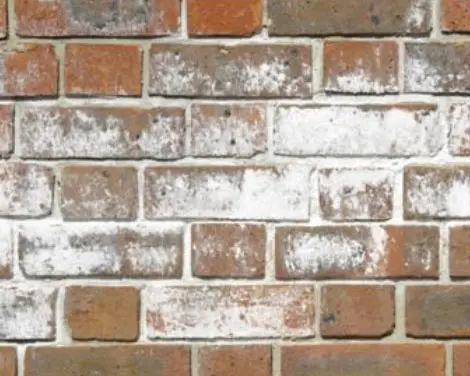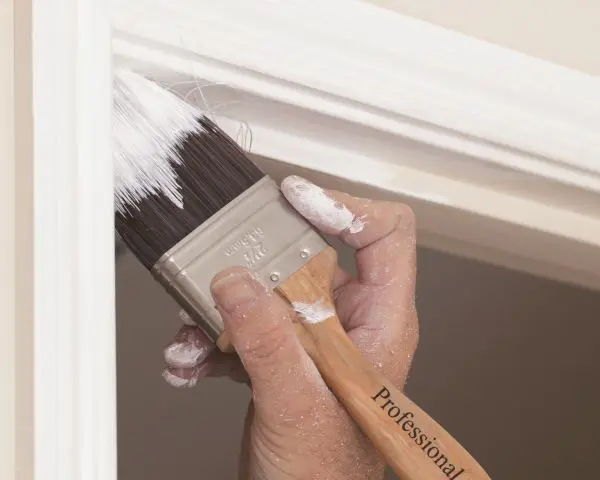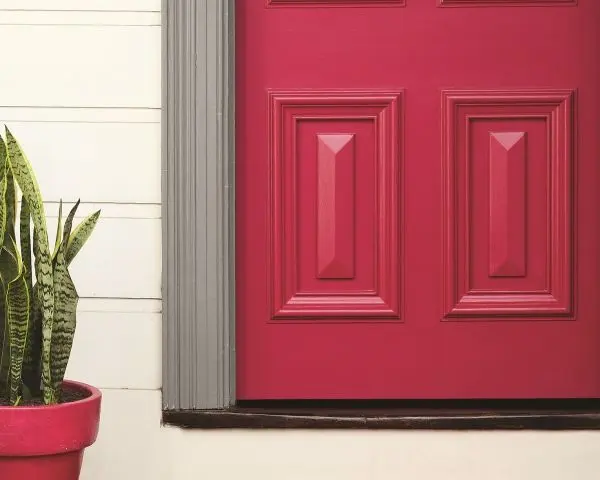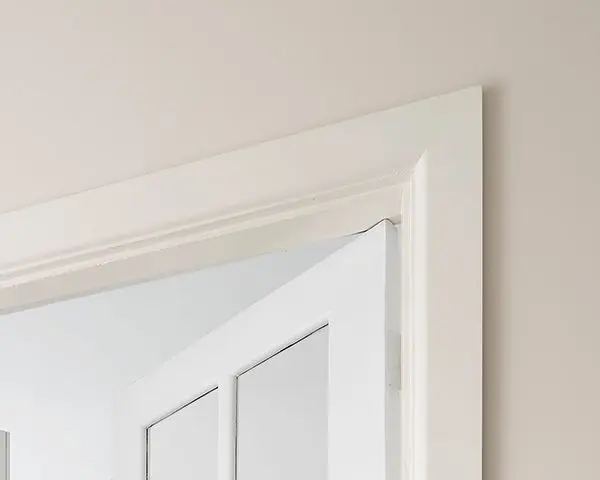Blistering of exterior decorative paints
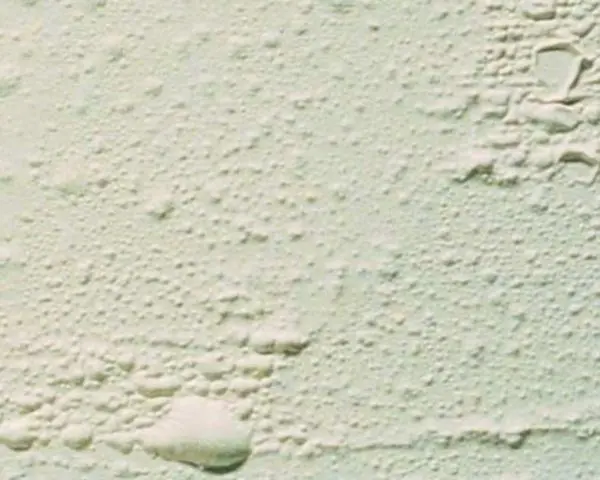
What is blistering?
“Blistering” is the formation of “bubbles” in the exterior decorative paint film, resulting from localised loss of adhesion and subsequent lifting of the existing paint film from the underlying surface. It may be that one paint layer has lost adhesion to the one beneath or it may be that all the paint layers collectively have lost adhesion to the underlying substrate. The loss of adhesion and blistering can quickly lead to paint flaking and peeling.
Two main types of blistering:
Those caused by moisture entrapment within the substrate beneath the paint film, which converts from a liquid into a vapour when the surface is heated by the sun and expands but cannot escape through the paint film.
Those caused by solvent entrapment beneath the paint film during application, where the solvent cannot escape (evaporate) when the surface is heated up quickly.
Why?
With age, the existing paint film becomes more rigid and quite brittle, hence being less flexible the painted surface will struggle to withstand the forces created by constant expansion and contraction of the substrate. As a result, the brittle paint film will eventually encounter hairline cracks, which are difficult to see with the naked eye. These cracks allow the entry of moisture from the atmosphere (rain, dew, humidity), which in turn weakens the adhesion of the existing paint to the substrate. While the painted surface remains in an aged condition, the moisture can slowly enter and escape as surface temperatures rise and fall daily.
When the new layer of paint is applied it effectively seals off the surface thereby preventing the easy transmission of moisture vapour through the paint film. Moisture/air beneath the paint film is now trapped. When the painted surface is heated by the sun, the moisture/air expands and blisters form because it cannot escape freely.
Blistering is often quite severe on exterior weatherboards facing North or West because of this situation. The blisters appear when the painted surface is heated by the sun. When the temperatures cool in the evening it is possible for the blisters to shrink completely or decrease in size and/or frequency, then reappear the next day.
How does it occur?
The usual causes of “blistering” include:
Moisture in the substrate (e.g. if moisture level in timber is over 15%).
Poor substrate preparation to eliminate unsound & aged paint films.
Dark colour which absorb a lot of heat, applied over light colours will force the moisture/air vapour to the surface more quickly.
Heat causes the moisture/air trapped beneath the film to expand and force its way out by forming blisters.
Surface contamination can be trapped beneath a new paint film.
Solvents can become trapped beneath the paint film during application.
To minimise the risk of this problem occurring:
Where possible choose lighter colours:
The rate and extent of blistering is influenced by topcoat colour selection and prevailing weather conditions. Dark colours will absorb more heat than lighter colours and will therefore put more stress on the existing paint system, due to greater expansion and contraction of the substrate.
Effective surface preparation is critical:
Painted surfaces that receive direct sun and rain, notably roofs and walls facing from North to West, will be placed under the greatest stress. Hence, if the existing paint system is in poor condition and adhesion loss has already occurred, it is reasonable to expect this unsound surface will result in blistering, when a fresh coat of paint is applied directly over the existing coatings, without proper and effective surface preparation.
Solution
If the paint is found to be unsound, it will need to be completely removed: The existing paint system will fail at the layer that has the weakest adhesion. Old painted surfaces will require adequate surface preparation. The first step is to carry out a series of “adhesion tests” to clearly determine how sound or unsound the existing paint work is.
In order to fix the problem completely the extent and causes of the problem need to be clearly identified, the causes removed and the old paint stripped back to sound substrate before any new painting commences. Failure to do this will only result in further blistering.
In general, blistering is an indication that the adhesion of the paint film is failing therefore simply repairing the blisters is unlikely to cure the problem. Once blistering occurs, it is likely that more blisters will appear.
Prevention
Blistering due to adhesion loss can occur many ways however the most common ones include:
Painting over weathered timber:
When new timber is exposed to the weather, the surface layers begin to deteriorate, eventually turning the timber grey. Deterioration can occur quickly and in as little as three months, rendering the surface unsuitable for painting without proper restoration. Restoration involves removing the weathered layer back to fresh timber suitable for painting. This can be achieved by either mechanical sanding or chemical treatments (timber reviver).
Painting over old paint: The suitability of the existing aged paint work needs to be determined prior to repainting. As aged paint films become more brittle, they encounter hairline cracks, because they are less capable of withstanding the natural expansion and contraction forces and the oldest paint layer, usually the primer, looses adhesion to the substrate. Hence, when blistering occurs, it often happens at the primersubstrate interface. How to determine if the existing paint film is sound and suitable for repainting? A series of cross-hatch adhesion tests need to be carried out after the test area itself is thoroughly cleaned to remove dirt, dust, chalk, etc. Details on how this test is carried out are provided in a separate bulletin.
Painting over old paint: Moisture from the atmosphere can be present in the substrate prior to painting. If it becomes trapped beneath the paint film. It will force its way out when the sun heats the surface, resulting in blistering due to adhesion loss. Therefore, the moisture levels need to be checked prior to painting. Golden rule: If the moisture content of bare timber is above 15% it is unsuitable for painting and must be allowed to dry out. A portable moisture meter can quickly determine what the current moisture levels are. Details on the correct use of a “moisture meter” are provided in a separate bulletin. After painting, the moisture levels within the substrate need to remain low to avoid blistering. If the levels rise due to water ingress, seepage, rising damp or damage to the paint film, then blistering is likely to occur.
Find out everything you need to know about blistering of exterior decorative paints by downloading the Dulux Technical Advice PDF.
More paint problem solutions
Efflorescence
Efflorescence is the deposit of crusty white mineral salts that appear on a masonry surface such as concrete, render, brick or mortar.
Paint touch up
Discover how to touch up a small area of a newly painted surface to conceal repairs to minor damage or to cover up small surface defects.
Water-based versus oil-based enamel paints
Discover the differences between water-based and oil-based enamel paints.
Drying and hardening of water-based paints
All water-based paints undergo a “drying process” involving two distinct phases, evaporation and coalescence.
Get detailed information about the physical and chemical properties of our products.
Advice for those challenges that arise in your busy and varied days.
Browse Dulux specifications, product datasheets, substrate information and safety data sheets.
